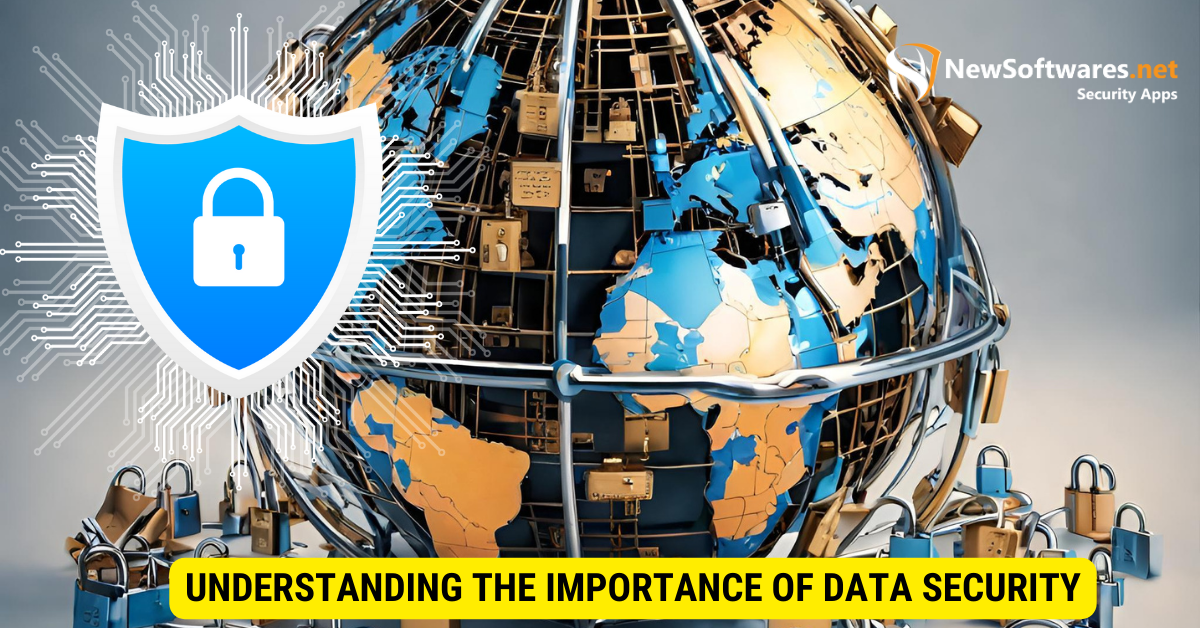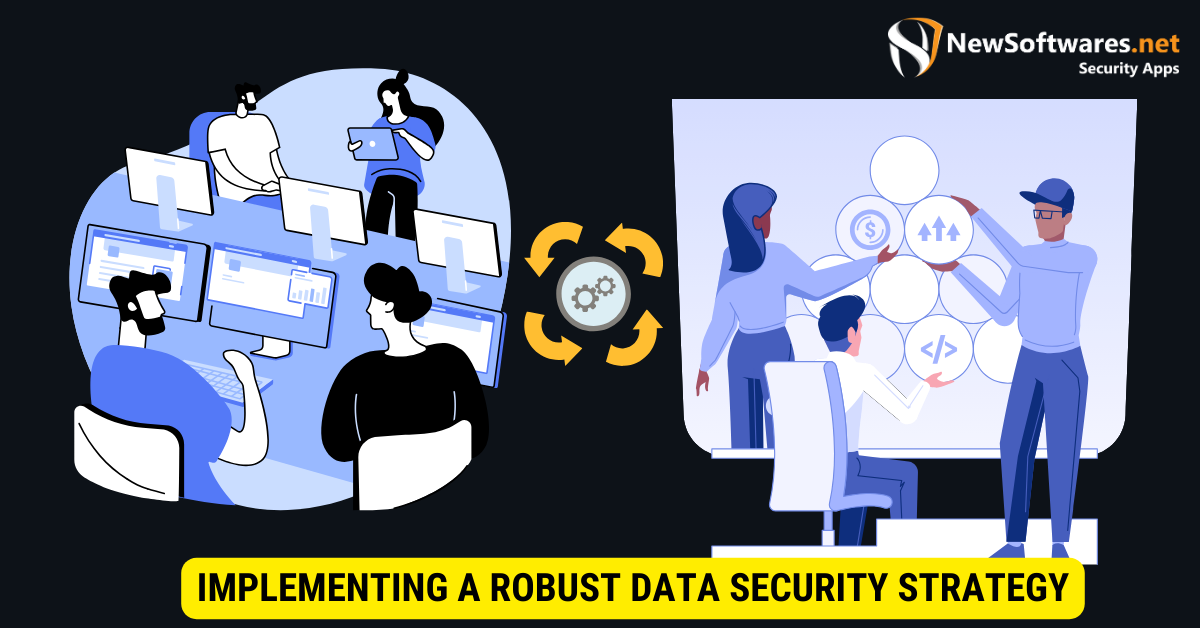To maximize the security of confidential data, organizations should employ a comprehensive approach that involves understanding the importance of data security, adopting strong encryption and storage techniques, implementing data access controls, leveraging technology such as AI, and providing robust employee training. By integrating these elements, businesses can protect sensitive data against breaches and cyber threats.
In today’s digital age, the security of confidential data has become more crucial than ever. With increasing data breaches and cyber threats, organizations must prioritize safeguarding sensitive information. I will explore the various aspects of data security and provide insights into effectively maximizing confidential data protection.
Understanding the Importance of Data Security

In an interconnected world where data is the lifeblood of businesses and individuals alike, understanding the importance of data security is paramount. Data breaches can result in severe consequences for both organizations and individuals.
Impact of Data Leaks: The outcomes can be severe when sensitive information is misappropriated. Companies can confront legal consequences, erosion of client confidence, and tarnished public image. To illustrate, in 2017, Equifax, a leading credit reporting firm, experienced a data leak revealing the personal details of 147 million individuals. This incident led to a settlement worth $700 million, but it also eroded public trust in the company’s data security measures.
Individuals may experience identity theft, financial loss, and invasion of privacy. Imagine waking up one day to find that your bank account has been drained, your credit cards have been maxed out, and someone has taken out loans in your name. This nightmare scenario is a harsh reality for many victims of data breaches.
The Value of Confidential Data: Confidential data holds immense value, making it a prime target for cybercriminals. This contains personally identifiable information (PII) such as names, addresses, social security numbers, and financial data. With this information, criminals can commit fraud, including identity theft and financial scams.
Additionally, trade secrets and intellectual property are valuable assets that need protection. Companies invest significant resources in research and development to gain a competitive edge. If these trade secrets or intellectual property are compromised, it can have dire consequences for the company’s success and profitability. For instance, in 2018, the company sued a former employee of Tesla for allegedly stealing trade secrets related to their Autopilot technology. This case highlights the importance of safeguarding valuable intellectual property.
Furthermore, confidential data plays a crucial role in national security. Government agencies collect and store sensitive defense, intelligence, and law enforcement information. A breach in these systems could compromise national security, endangering citizens’ safety and the country’s integrity.
Key Elements of Data Security
Organizations must employ a comprehensive approach encompassing key elements to maximize data security. These elements work together to create a robust security framework.
Data Encryption Techniques: Encryption plays a critical role in data security by encoding information in a way that only authorized individuals can access. Implementing strong encryption algorithms ensures that even if data is intercepted, it remains unreadable and useless to unauthorized users.
Secure Data Storage Solutions: Storing data securely is crucial to protecting confidentiality. Organizations must adopt secure storage solutions, such as encrypted databases or cloud storage platforms with stringent access controls. Regular data backups also enhance resilience against data loss.
Data Access Controls: Besides encryption and secure storage, robust data access controls are essential for data security. Access controls involve setting up user authentication mechanisms, such as usernames and passwords, to ensure that only authorized individuals can access sensitive data. Furthermore, organizations can implement multi-factor authentication, biometric authentication, or role-based access controls to enhance data access security further.
Network Security Measures: Protecting data from unauthorized access during transmission is equally important. Organizations should implement network security measures, such as firewalls, intrusion detection systems, and virtual private networks (VPNs), to safeguard data while it is being transmitted over networks. These measures help prevent unauthorized access, data interception, and tampering.
Employee Training and Awareness: Data security is not solely dependent on technology; it also relies on the knowledge and awareness of employees. Organizations should deliver comprehensive training programs to educate employees about data security best practices, such as creating strong passwords, identifying phishing attempts, and handling sensitive data securely. Regular awareness campaigns and reminders can help reinforce good security habits among employees.
Incident Response and Recovery
Even with top-notch preventive strategies, security lapses and data compromises can arise. Enterprises need to possess a clear strategy to manage these unexpected events. This strategy should outline procedures for pinpointing and isolating the issue, alerting impacted individuals, delving into a detailed analysis, and enacting corrective actions. It’s also essential for businesses to periodically assess this strategy, refining it as needed for optimum efficacy.
Regulatory Compliance:
Compliance with relevant data protection regulations is crucial for organizations to avoid legal and financial consequences. Organizations must stay updated with the latest data protection laws and regulations, such as the General Data Protection Regulation (GDPR) or the California Consumer Privacy Act (CCPA), and ensure that their data security practices align with these requirements. Regular audits and assessments can help identify compliance gaps and enable organizations to take corrective actions.
Continuous Monitoring and Improvement:
Maintaining data security is a persistent effort demanding consistent oversight and enhancement. It’s crucial for institutions to consistently evaluate their safety protocols, undergo risk evaluations, and carry out intrusion tests to pinpoint system flaws or susceptibilities. Through active measures and regular updates to their security methodologies, entities can remain ahead of emerging risks and safeguard their critical information.
Implementing a Robust Data Security Strategy

An effective data security strategy goes beyond implementing technical solutions. It involves a holistic approach that includes identifying potential threats, establishing security policies, and training employees.
Identifying Potential Threats and Vulnerabilities: Conducting regular risk assessments and vulnerability scans helps identify potential threats and vulnerabilities in systems and networks. This enables organizations to mitigate risks before they are exploited proactively.
Establishing Security Policies and Procedures: Clear and well-defined security policies are essential to govern data protection efforts. These policies should outline security standards, define employee responsibilities, and establish incident response protocols.
When identifying potential threats and vulnerabilities, organizations must stay vigilant and proactive. Regular risk assessments and vulnerability scans are crucial to identify potential weaknesses in systems and networks. By doing so, organizations can stay one step ahead of cybercriminals and take necessary measures to mitigate risks before they are exploited.
During risk assessments, organizations analyze their systems and networks to identify any vulnerabilities malicious actors could exploit. This involves examining the infrastructure, software, and hardware components to ensure they are up-to-date and properly secured. By conducting these assessments regularly, organizations can stay informed about any potential threats and take immediate action to address them.
Establishing security policies and procedures is another vital aspect of a robust data security strategy. Clear and well-defined security policies provide guidelines and standards for employees, ensuring that data protection efforts are consistent and effective throughout the organization.
These policies should outline specific security standards that employees must adhere to, such as using strong passwords, encrypting sensitive data, and regularly updating software. By clearly defining these standards, organizations can ensure that everyone understands their part in maintaining data security and can take appropriate actions to protect sensitive information.
In addition to outlining security standards, security policies should also define employee responsibilities. This includes assigning roles and responsibilities for data protection, such as designating a data security officer answerable for overseeing the implementation and execution of security measures.
Furthermore, security policies should establish incident response protocols. In a security breach or data incident, organizations must have a clear plan to promptly and effectively address the situation. This includes steps to contain the breach, investigate the incident, and notify the appropriate parties, such as customers or regulatory authorities.
Educating staff is an essential element of a strong data protection plan. Despite having top-notch technological measures, mistakes by individuals can still result in data compromises. As such, companies need to prioritize holistic training initiatives to inform staff on safe data handling and heighten their understanding of possible risks.
These instructional sessions should address areas like identifying deceptive emails, accessing trusted Wi-Fi networks, and managing confidential data correctly. By equipping staff with the expertise to detect and react to emerging risks, businesses can greatly minimize data vulnerabilities stemming from human oversights.
In conclusion, implementing a robust data security strategy requires more than technical solutions. It involves a holistic approach that includes identifying potential threats, establishing security policies, and training employees. By taking these steps, organizations can enhance their data protection efforts and minimize the risk of data breaches and cyberattacks.
Enhancing Data Security with Technology
Technology advancements offer many tools and solutions to enhance data security measures significantly.
Utilizing Security Software and Tools: Firewalls, antivirus software, and intrusion detection systems are essential security tools that protect against external threats. Implementing multi-factor authentication and access control mechanisms adds more security to sensitive data.
The Influence of Artificial Intelligence on Data Protection: AI is transforming data safety by enhancing its ability to detect and respond to threats. Systems driven by AI discern trends and irregularities in data flow, facilitating prompt recognition of looming risks and breaches.
Training and Educating Employees on Data Security
Staff members frequently represent the most vulnerable point in data protection, underscoring the need for extensive instruction and awareness to protect sensitive information. Value of Consistent Security Education: Routine programs emphasizing security consciousness enable staff to grasp the importance of safeguarding data, identify typical threats, and adhere to recommended guidelines. Such initiatives foster an environment of alertness and initiative towards identifying possible risks.
Creating a Culture of Data Privacy
Organizations should promote a culture of data privacy by instilling proper data handling and protection practices in their employees. Encouraging a sense of ownership around data security creates a collective responsibility to safeguard confidential information.
Key Takeaways
- Consequences of Data Breaches: Organizations face legal liabilities, loss of trust, and reputational damage, while individuals risk identity theft and financial loss.
- Value of Confidential Data: Due to their immense value, personal data, trade secrets, and intellectual property are prime targets for cybercriminals.
- Components of Data Security: Effective data security involves data encryption, secure storage solutions, robust data access controls, network security measures, and continuous monitoring.
- Role of Technology in Data Security: Tools like firewalls, AI-driven threat detection, and multi-factor authentication play a crucial role in strengthening data defenses.
- Employee Involvement: Training and creating a culture of data privacy among employees is critical to minimizing human-related security breaches.
FAQs
Why is understanding the importance of data security crucial?
Understanding the importance of data security is vital, as data breaches can lead to severe legal, financial, and reputational consequences for organizations, resulting in identity theft and financial loss for individuals.
What role does encryption play in data security?
Encryption encodes information so only authorized users can access it, making intercepted data unreadable and useless to unauthorized individuals.
Why is employee training essential for data security?
Employees often represent the weakest link in data security; hence, comprehensive training educates them on best practices, helping reduce risks associated with human errors.
How does AI contribute to data security?
AI augments data security by identifying patterns and anomalies in data traffic, facilitating early detection of threats, and enhancing response capabilities.
What is the significance of establishing security policies and procedures?
Clear and well-defined security policies set the guidelines and standards for data protection efforts, ensuring consistent and effective protection throughout the organization.
Conclusion
In conclusion, maximizing the security of confidential data requires a multifaceted approach encompassing various elements, such as understanding the importance of data security, implementing robust security measures, leveraging technology, and educating employees. Organizations can strengthen their defenses and protect valuable data from threats and breaches by adopting these strategies. Ultimately, prioritizing data security is essential for organizations and safeguarding individuals’ privacy and trust in an increasingly interconnected world.
